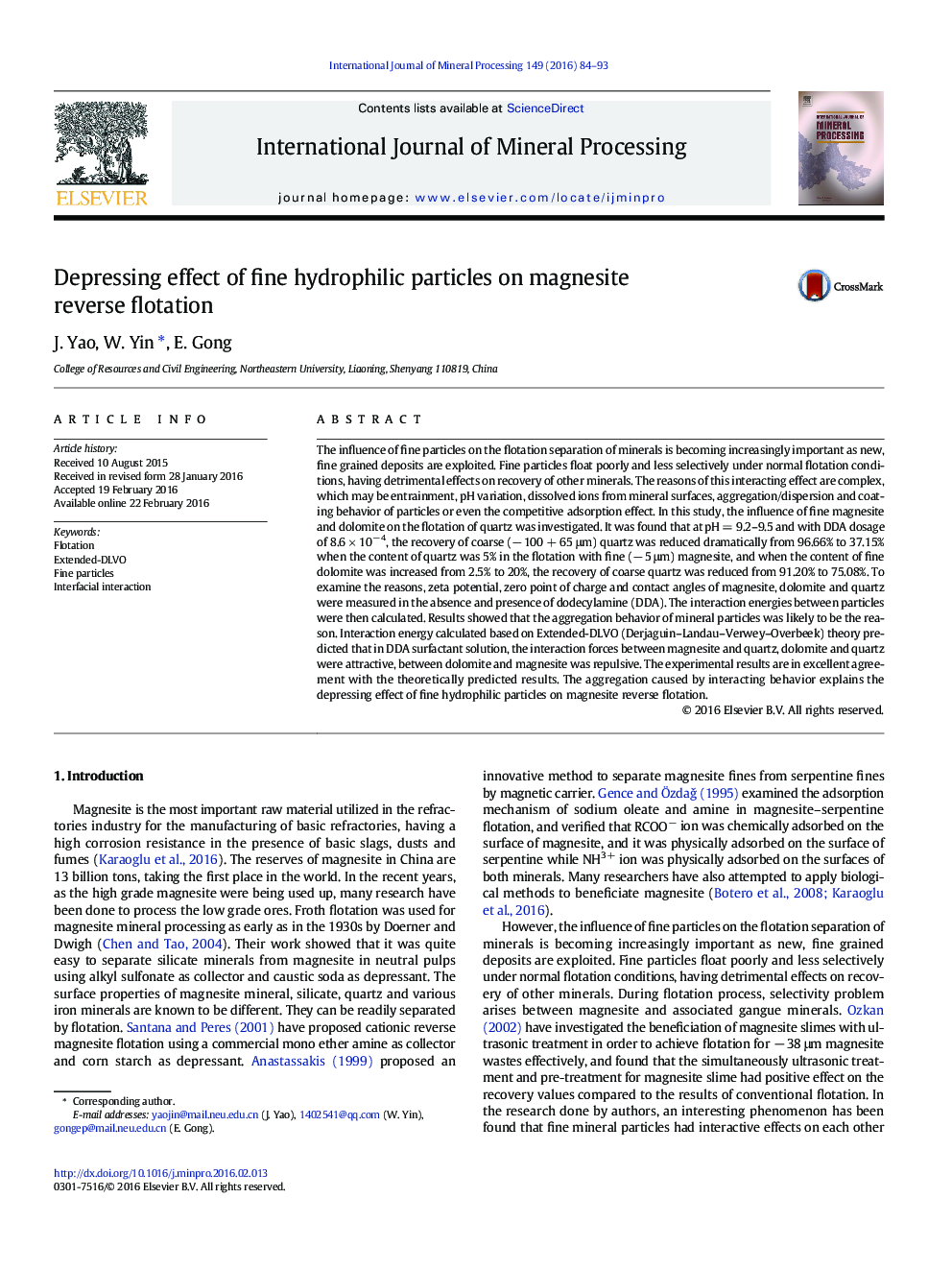| کد مقاله | کد نشریه | سال انتشار | مقاله انگلیسی | نسخه تمام متن |
|---|---|---|---|---|
| 213720 | 1425784 | 2016 | 10 صفحه PDF | دانلود رایگان |
• A novel phenomenon in magnesite flotation was discovered that fine hydrophilic particles had depressing effect.
• The recovery of quartz was decreased by 59% by adding fine magnesite and by 16% by adding fine dolomite.
• Zeta-potential, contact angle and surface tension of magnesite, dolomite and quartz were measured.
• The interfacial interaction energy determining aggregation agrees with experimental results.
The influence of fine particles on the flotation separation of minerals is becoming increasingly important as new, fine grained deposits are exploited. Fine particles float poorly and less selectively under normal flotation conditions, having detrimental effects on recovery of other minerals. The reasons of this interacting effect are complex, which may be entrainment, pH variation, dissolved ions from mineral surfaces, aggregation/dispersion and coating behavior of particles or even the competitive adsorption effect. In this study, the influence of fine magnesite and dolomite on the flotation of quartz was investigated. It was found that at pH = 9.2–9.5 and with DDA dosage of 8.6 × 10− 4, the recovery of coarse (− 100 + 65 μm) quartz was reduced dramatically from 96.66% to 37.15% when the content of quartz was 5% in the flotation with fine (− 5 μm) magnesite, and when the content of fine dolomite was increased from 2.5% to 20%, the recovery of coarse quartz was reduced from 91.20% to 75.08%. To examine the reasons, zeta potential, zero point of charge and contact angles of magnesite, dolomite and quartz were measured in the absence and presence of dodecylamine (DDA). The interaction energies between particles were then calculated. Results showed that the aggregation behavior of mineral particles was likely to be the reason. Interaction energy calculated based on Extended-DLVO (Derjaguin–Landau–Verwey–Overbeek) theory predicted that in DDA surfactant solution, the interaction forces between magnesite and quartz, dolomite and quartz were attractive, between dolomite and magnesite was repulsive. The experimental results are in excellent agreement with the theoretically predicted results. The aggregation caused by interacting behavior explains the depressing effect of fine hydrophilic particles on magnesite reverse flotation.
The float products of quartz-magnesite mixture (a), quartz-dolomite mixture(b) exhibits serious coating of fine magnesite and dolomite particles on quartz by SEM analysis.Figure optionsDownload as PowerPoint slide
Journal: International Journal of Mineral Processing - Volume 149, 10 April 2016, Pages 84–93
